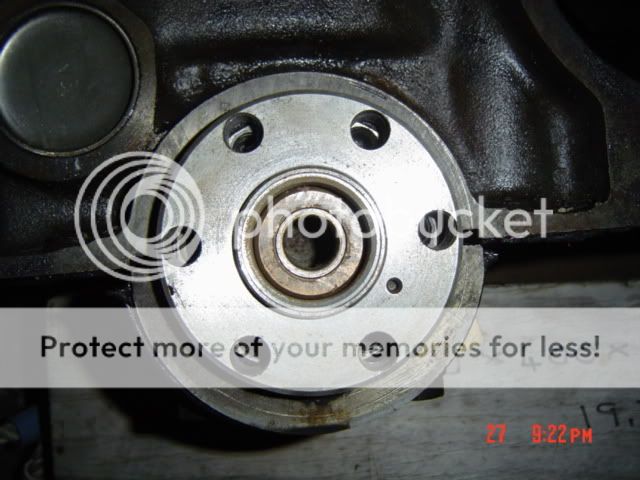No worries. Just use the stock 221 flywheel and be done with it. The later trans will work as long as the sandwhich plate is the right thickness. The early manual ones were thicker than the later auto sandwhich plates.
MAKE SURE YOU USE BOLTS WHICH DON'T EXTEND INTO THE MAIN SEAL. A NASTY TRICK WHICH WILL TAKE THE ROPE SEAL OUT.
The stock clutch plate on early Falcons was about 9.125. Later cross flows were 9.25".EFI ones were about 4.9 v8 spec, 9.5", the Bronco 4.1 ones were even bigger. I guess the XF clutch plate will bolt on the 221 with ease. If not, its just a redrill.
The 250 has a 3" bolt spacing, and a 3.625" steel crank flange. The 144 to 221's have a 2.75", and a 3.3" crank flange.
The internal spigot is the same 1.375", so really the only alteration is the size of the falnge and bolt spacing
The earlier 66 to 70 flywheels are rebated, but they sit the same, have the same 160 teeth, aside from the diameter, its all the same.
The bell housing bolt spacing from the first big Falcons of 1966 is the same.
The way to fit it is to get a new blank flywheel before they drill it. On a manual, that's the only way. I'd rather chop your leg off with a Husqvarna than recomend any thing else.
One guy who has played with them if its an Auto, are
addo and
HotRod They have looked at getting the stock 160 tooth auto flexplate, and elongating the holes inwards, which should be safe. I think Hot Rods 27 T-bucket with 221 Turbo and EFi still has the C4 auto, and the earlier flexplate.
Here is a 250 crank flange on top of a 200/221 crank. See the misfit?
Here is the stock 200/221 flange
The flywheel off a 1966 is little different to a 1993 XF ute, aside from the bolts and flange size.



